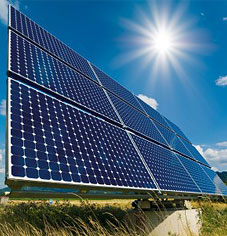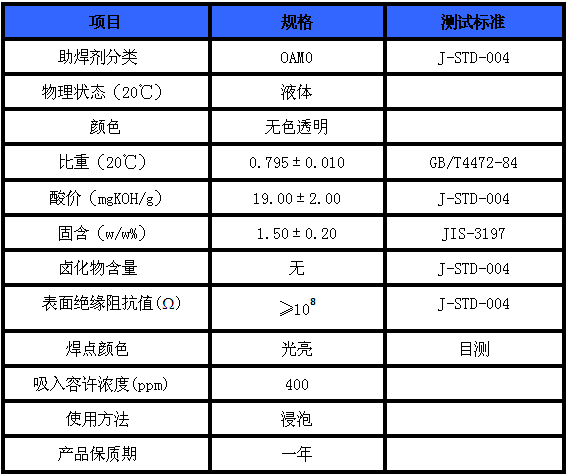Product Name:Flux for photovoltaic module

EF8000Flux for photovoltaic module
Product features
Low solid content high activity wash-free flux.
Product advantage
● Low solid content and no halogen, ensuring the reliability of the components (meeting the double 85 test requirements);
Low smell, less smoke, completely suitable for manual operation;
● Smooth welding and smooth and bright tin surface;
● Excellent welding performance, good bonding force and low virtual welding rate;
Application range
It is suitable for manual welding of solar cells and general electronic industry, and can replace activated rosin flux with potential corrosion and pure rosin flux with poor performance. This product has passed the double 85 test and has no yellowing and blackening after lamination.
Parameter
technological requirements
(1) soaking
The tin-coated strip shall be completely soaked in the flux, and the soaking time shall be determined according to the oxidation state of the surface of the tin-coated strip. The normal time shall be 5-10 minutes. During soaking, the tin-coated strip shall be turned over in time to prevent the overlapping position from not being soaked in the flux, resulting in insufficient activation and poor welding.
(2) Pre-baking
After soaking the tin-coated strip for a sufficient time, take it out and use a blower or a constant temperature table to blow (dry) it. The temperature is controlled at about 60-80 degrees to ensure that there is no flowable liquid or liquid drop on the surface of the tin-coated strip. The temperature must not be too high, which will lead to decomposition of flux active ingredients before welding.
White particulate matter will appear on the surface of tin-coated strip during drying. This is a normal phenomenon, because the active substance in the flux itself is white particles, and the active substance in the flux is precipitated on the surface of the tin-coated strip after the solvent volatilizes.
(3) welding
After fixing the tin-coated strip in place, push welding with an electric iron. The actual temperature of the electric iron should be controlled between 320-350 degrees. Too low a temperature will lead to incomplete melting of the tin surface, virtual welding and uneven tin surface after welding. Too high a temperature will lead to rupture of the battery sheet and tin dripping (excessive melting of the tin surface and flowing onto the battery sheet will affect the quality). Due to the principle of heat transfer, the actual temperature of the welding head will drop by about 10 degrees after contacting the tin-coated strip. It is recommended to set the temperature of the electric soldering iron to about 10 degrees higher than the actual value according to the actual situation. The push welding process should be controlled within 2-5 seconds according to the normal time of the tin coating tape. Do not be too slow or too fast.
Due to the different proficiency of workers, the active ingredients of flux may remain. In order to ensure the consistency of product quality, it is suggested that cotton be dipped with a small amount of absolute ethyl alcohol to wipe the surface and edge of tin-coated strip after welding to avoid subsequent defects.

